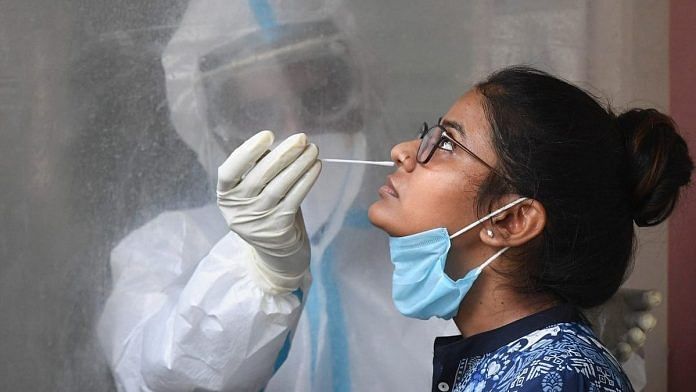New Delhi: After two years of fighting the Covid pandemic, the Narendra Modi government is betting big on artificial intelligence (AI) to help it keep track of disease outbreaks across India.
A tool currently being developed by a private company along with the National Centre for Disease Control (NCDC) will scan all media reports related to health, to create a database of outbreaks of 33 diseases — some with the potential to become epidemics — that are monitored under the Integrated Disease Surveillance Programme (IDSP).
The Union Ministry of Health and Family Welfare has signed a memorandum of understanding (MoU) with the private company for developing two tools initially — one to track disease outbreaks, and another to develop an AI-based system to interpret X-ray reports based on an India-specific database. The starting database will be of 1,20,000 X-ray images, but more will be added as the tool progresses.
“We plan to use artificial intelligence in a big way in public health. This is the first step towards that. We have told the company that they can do the project as part of their corporate social responsibility, but the intellectual property rights for whatever they develop will be with the government,” a senior health ministry official told ThePrint.
“Currently, we scan the media for outbreak reports ,but that is done manually once a day and largely limited to English and Hindi media. But the AI tool will also scan vernacular media. The data will be shared with IDSP state units which can then send personnel on the ground for assessment. This will ensure that the response time is reduced,” the official explained.
The IDSP comprises a Central Surveillance Unit (CSU), State Surveillance Units (SSU) in all state/UT headquarters and District Surveillance Units (DSU) in all districts in the country. The purpose of the IDSP is “to strengthen/maintain decentralised laboratory-based IT-enabled disease surveillance systems for epidemic-prone diseases to monitor disease trends, and to detect and respond to outbreaks in early rising phase through trained Rapid Response Team”. It tracks 33 diseases that are now being fed into the AI tool.
A tool for closer scrutiny
A rudimentary version of the media-scanning AI tool, a demonstration of which was seen by ThePrint, has data not just on Covid outbreaks across the country but also on road accidents, burn injuries and oral cancer, none of which have epidemic potential in the usual sense of the term.
One of the officials of the company — which has started work in a room in Nirman Bhawan, where the health ministry is housed — explained that this is because, in the initial stage, the tool is collating all health-related news.
“We have also fed some keywords that can be associated with these 33 diseases into the system. This is because an outbreak may present as something else initially and the disease may actually be identified at a later stage,” the health ministry official quoted above said.
“For example, if you look at the IDSP alerts now, there is a report of a hooch tragedy. That is because this could be associated with viral hepatitis and not hooch, which is subject to investigation,” the official added.
NCDC old-timers said when the IDSP was set up in 2004, one of the goals was real-time disease surveillance, but as the reach of the media has increased, reports from the ground have become an important part of surveillance.
Covid showed the need for closer scrutiny than just manual scanning of some newspapers and channels, they pointed out.
India-specific X-ray tool
The private company is also working with doctors at AIIMS to develop another tool that will interpret X-ray reports.
“Currently, all such tools that are available are based on databases from the US or UK. We wanted something that is specific to India,” the senior health ministry official said.
The tool is being developed to initially look at 14 parameters in a chest X-ray, such as infiltration, emphysema, nodule, pneumonia and masses. At this stage, the diagnosis by the tool is being cross-checked by a radiologist and additional changes are being made in the tool to make it more accurate.
“As the database becomes bigger, the tool will become more efficient, but the way we have designed it, it will always be used with human intervention,” the official said.
(Edited by Nida Fatima Siddiqui)
Also read: Chandigarh-based startup uses AI to automate the milk supply chain



